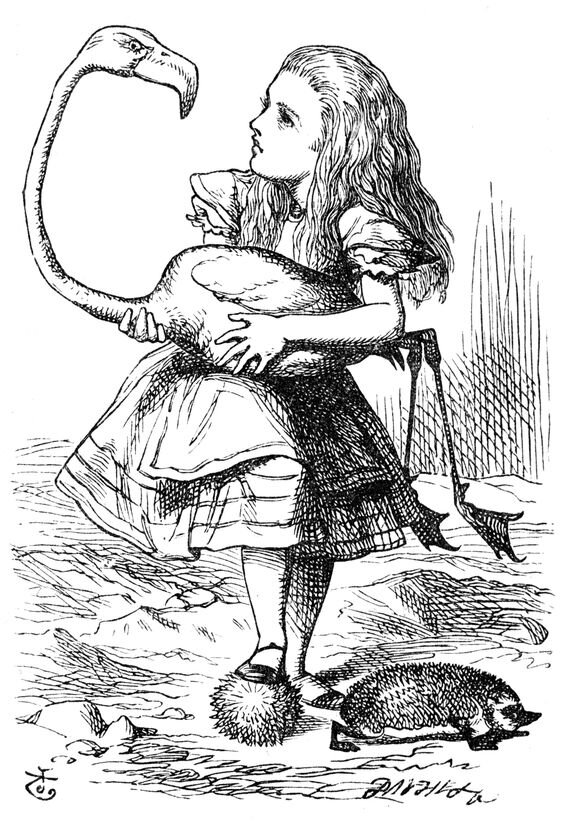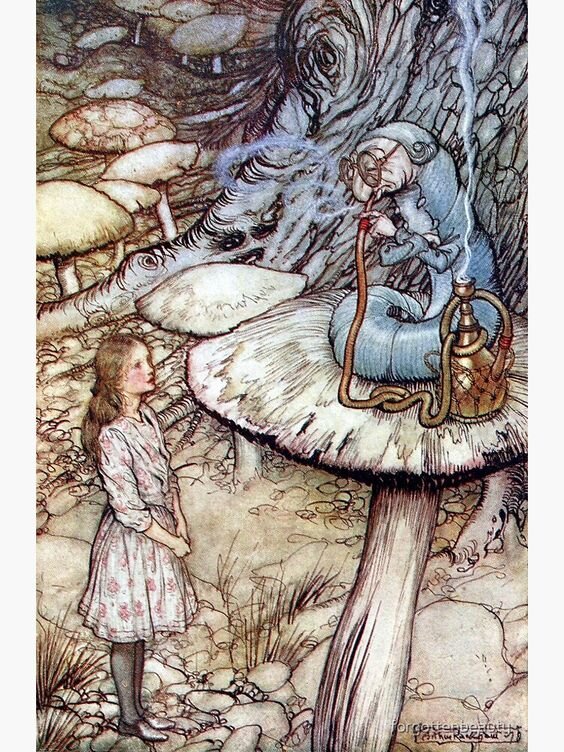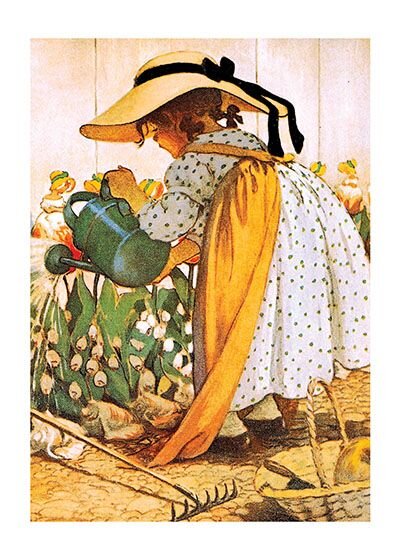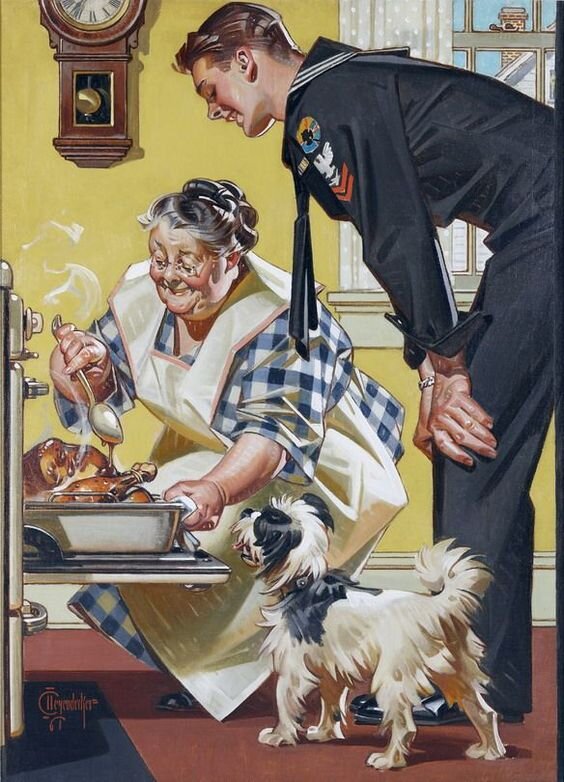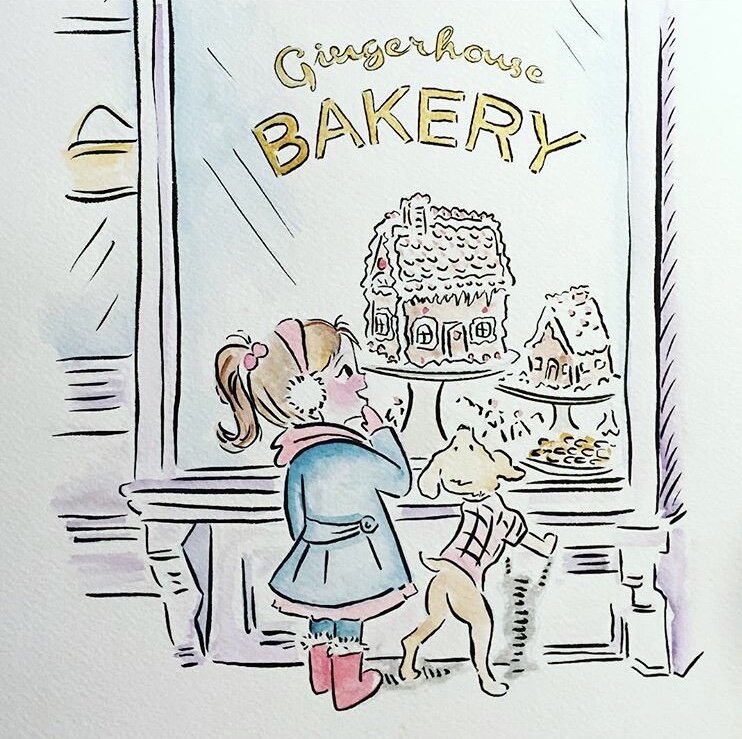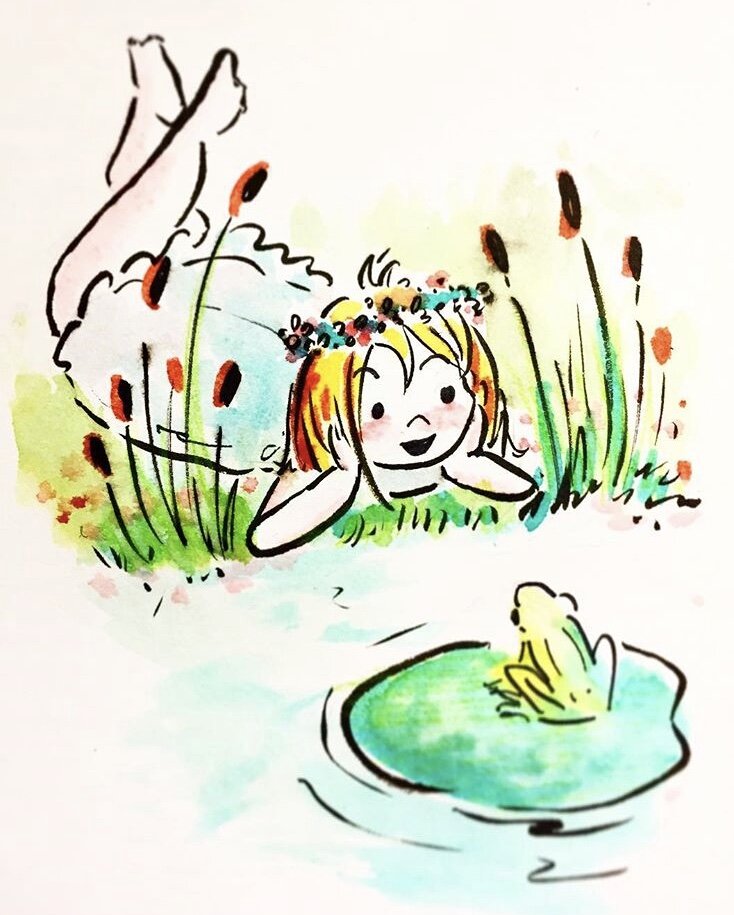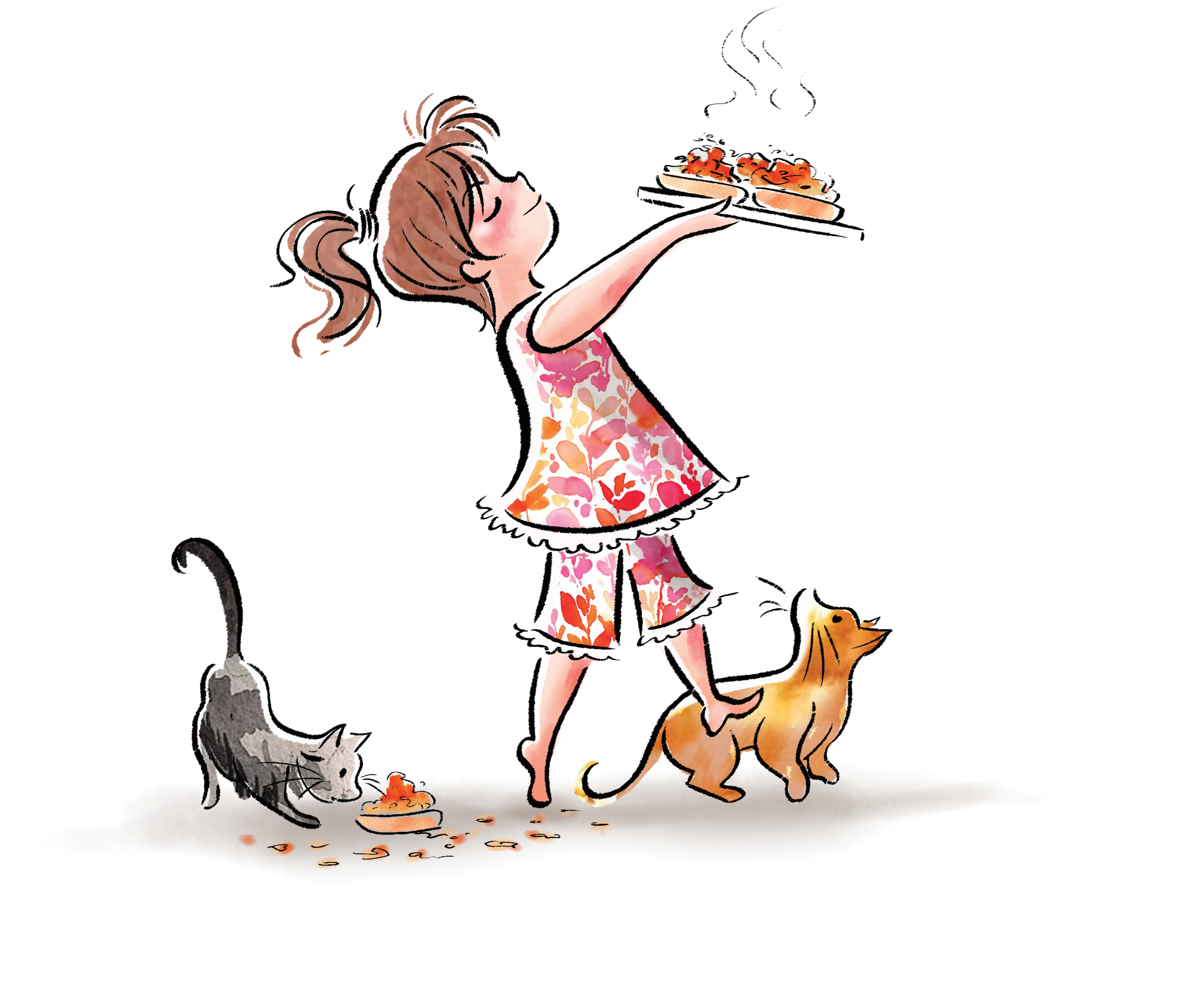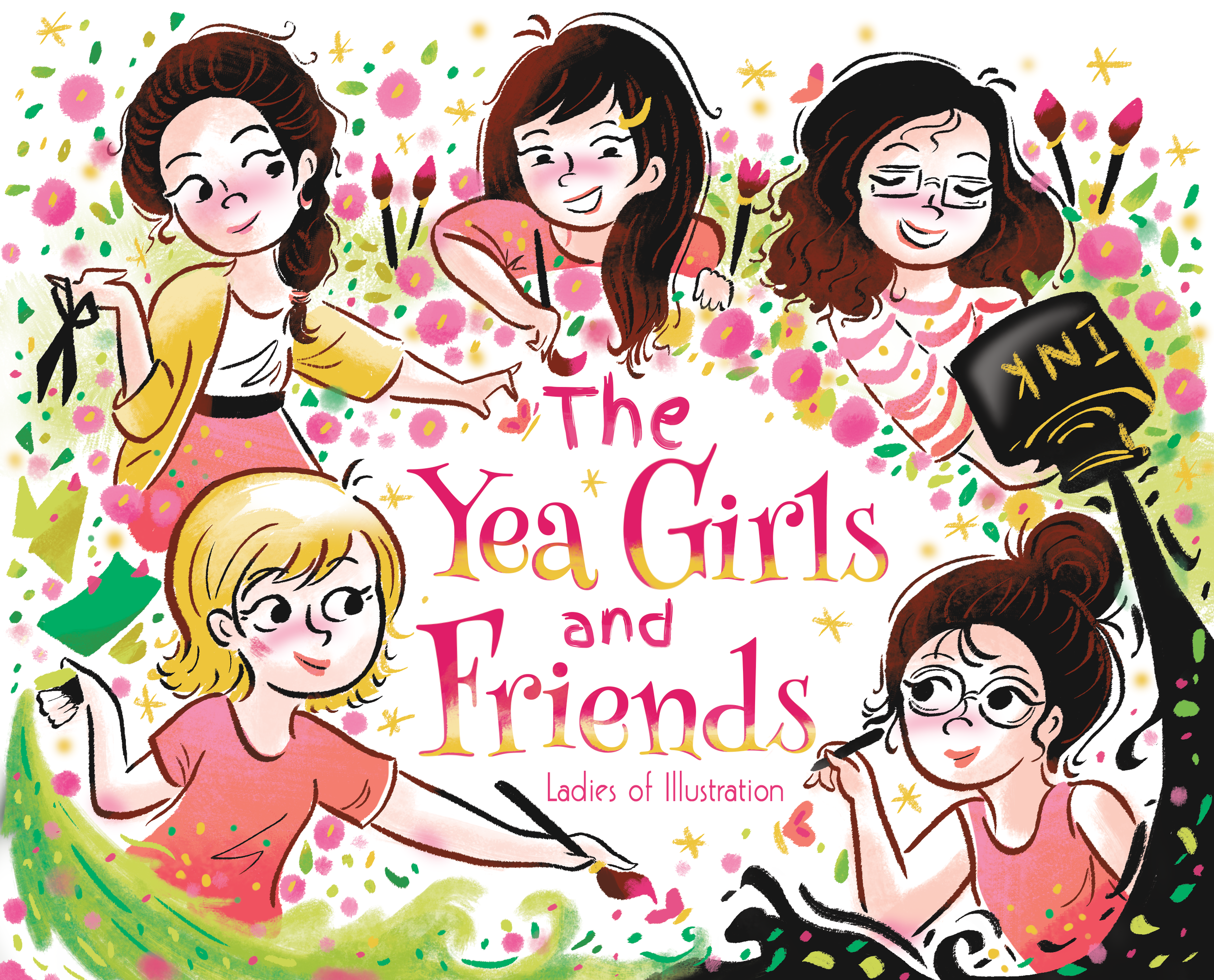“Expressive ideas and themes emerge in actions on the materials. ”
Art & Technology
Chronicle history of illustration style as a result of printing technology: John Tenniel (1865) Pen & Ink, Arthur Rackham (1907) Watercolor & Ink, Jessie Willcox Smith (1917-1933) Watercolor, JC Leyendecker (1920 -1930) Oil Painting
The history of illustration has always been linked to print technology, beginning with the use of engraving and lithography. The invention of chromolithography introduced the rise of the Golden Age of Illustration. More colors could be used and more prints could be made more cheaply. After working for ten years, Arthur Rackham’s career finally took off once multiple colors could be printed separately and his work was able to be mass-produced.
As illustrators, most of our work is also reproduced, necessitating illustrators to have a close relationship with print technology. Like Arthur Rackham, the style and medium of one’s illustration is effected by the ability of the technology in use. This changes how we create and teach art.
“Historically, expanded materiality is central to art education (e.g., Lowenfeld & Brittain, 1987), because learning comes from relational actions with materials —doing knowing. ”
Digital Medium
Now, in the digital age, the use of digital material/medium has once again changed an illustrators' relationship with technology. Originally, the dialogue was between physical mediums (ink, watercolor, gouache, and oil paint) and print mediums (engraving & chromolithography). The dialogue now is between the physical medium and digital mediums (computers & digital printers).
As illustrators, we have to think about where the piece will mainly “live.” Will it live in cyberspace, a book or magazine, or someone’s home? The answer to this question will determine what material or medium an illustrator will choose to use. For example, if I was designing a web banner, I would choose to do the piece digitally as it is easier to create a digital piece that lives in the digital world. For children’s books or editorial illustration, I’ve moved to digital mixed media, where I incorporate aspects of the physical medium and overlay them with the digital medium. Finally, for portraits or fine art pieces, I would choose paper art.
“Important to building connections are the physical and virtual spaces that are used to support communities of practice. ”
An Illustrator’s Studio
The same style of art, simple line drawing with limited coloring. Using physical materials to digital materials: pen/ink and watercolor v.s. digital line drawing & watercolor collage v.s. digital painting.
In my studio, I have a range of physical materials and digital materials. Some of the physical materials I use for illustrations are pen/ink, watercolors, gouache, color pencils, and color card stock paper. I also have a range of craft materials like felt, yarn, embroidery thread, beads, and wire. When I create physical pieces of art like handmade gift cards or a piece to live in someone’s home, I like to collage with a range of materials.
The digital materials/technologies I keep in my studio include Mac desktop, Cintiq tablet, Silhouette die cutter, Epson Surecolor printer, Leaser black & white printer, laminator and Canon SLR camera. Almost all my work now has to go through a digital process. About fifty percent is done using digital material or a combination of both. I loved to do a lot of pen & ink work. Now, most of that work is done digitally. I have found that working digitally has created a sharpness to my lines and color schemes that I was not able to create with other mediums.
Another aspect I love about digital material is the use of light in my illustrations. When I was painting, the light was created by using the method of color blending and contrast. Now in digital painting, light is created using gradients and opacities. As a result, it has expanded my artmaking and art style.

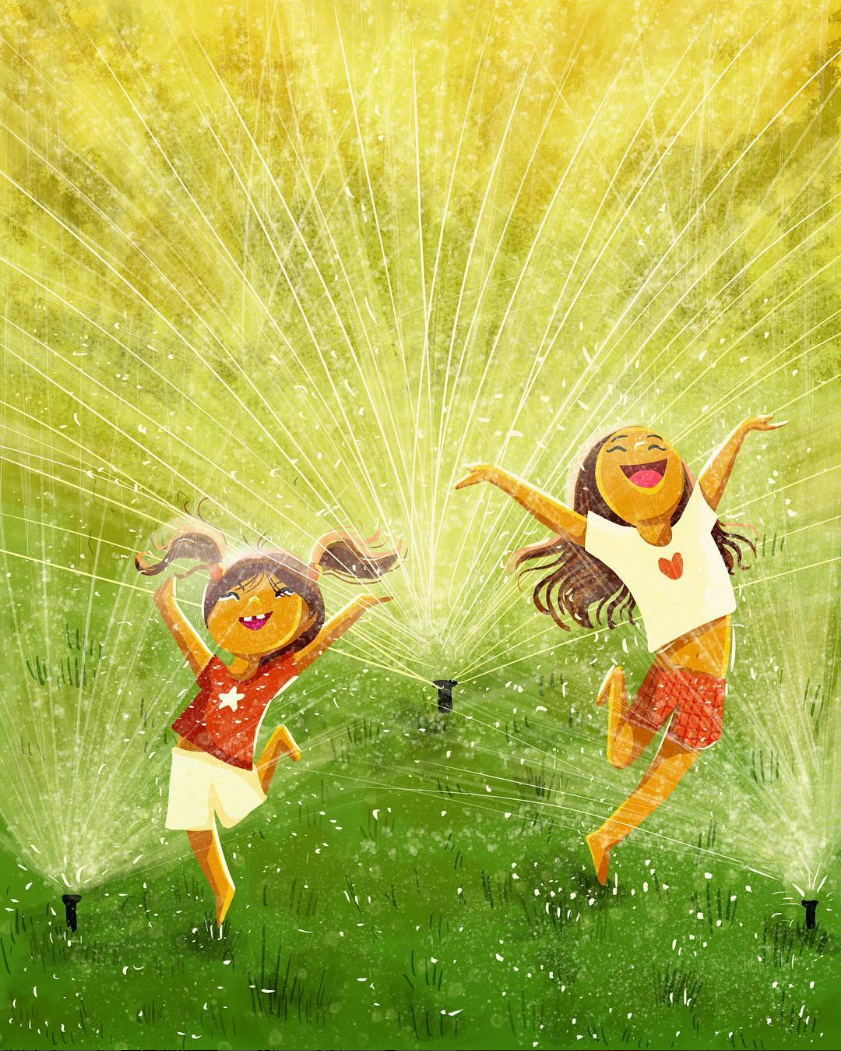
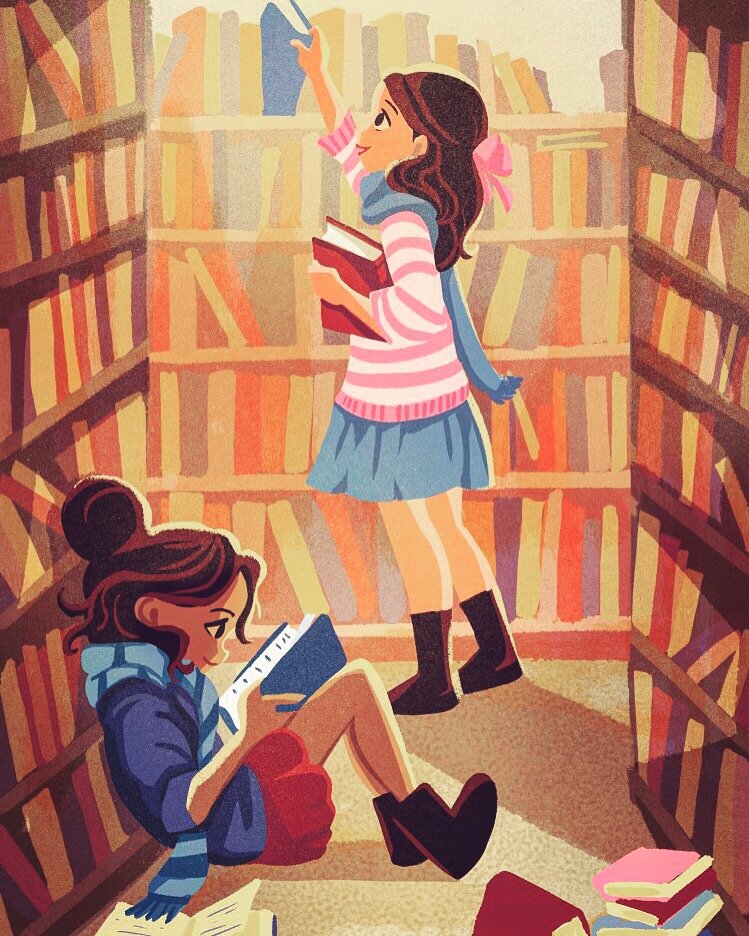
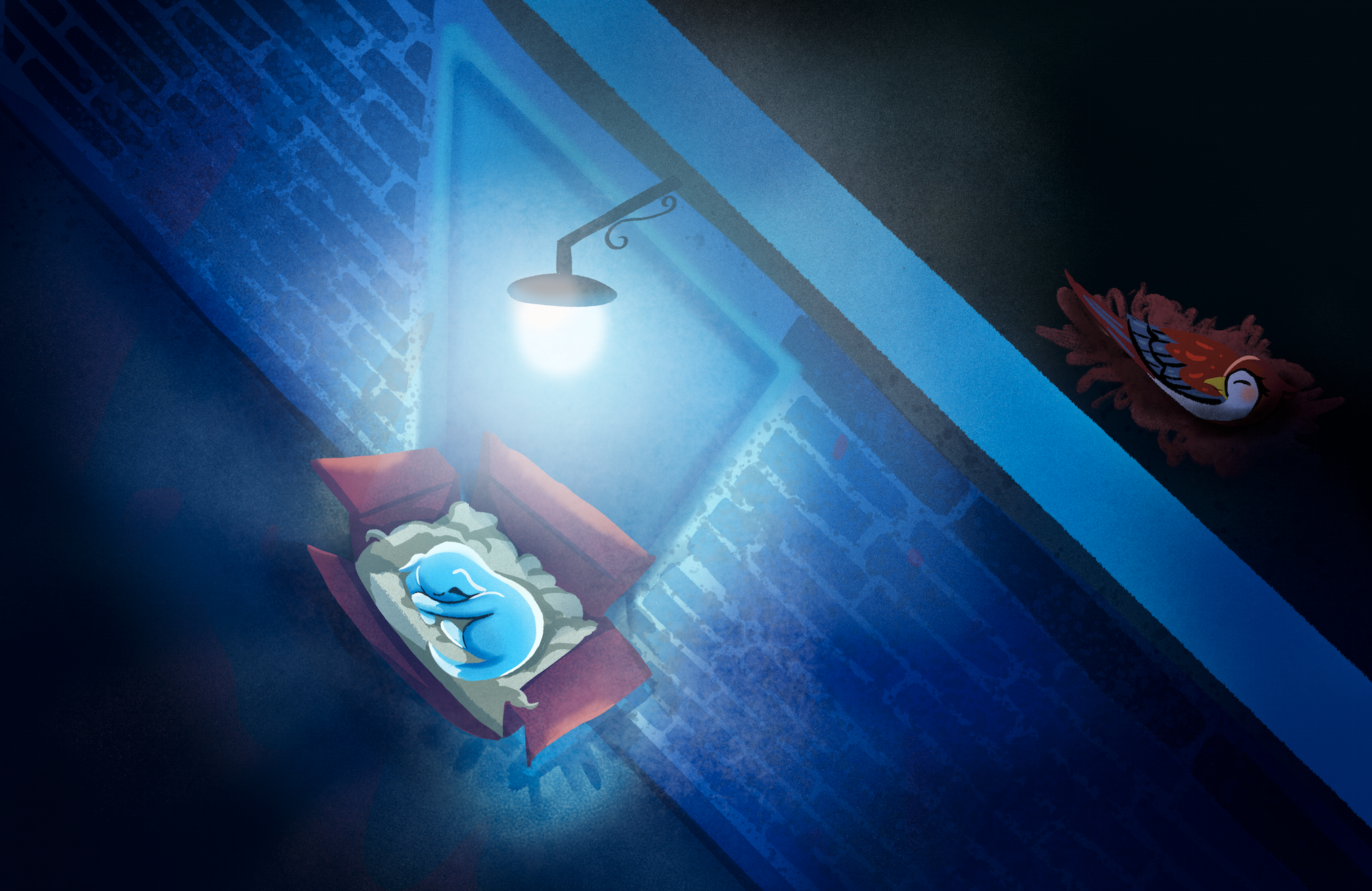
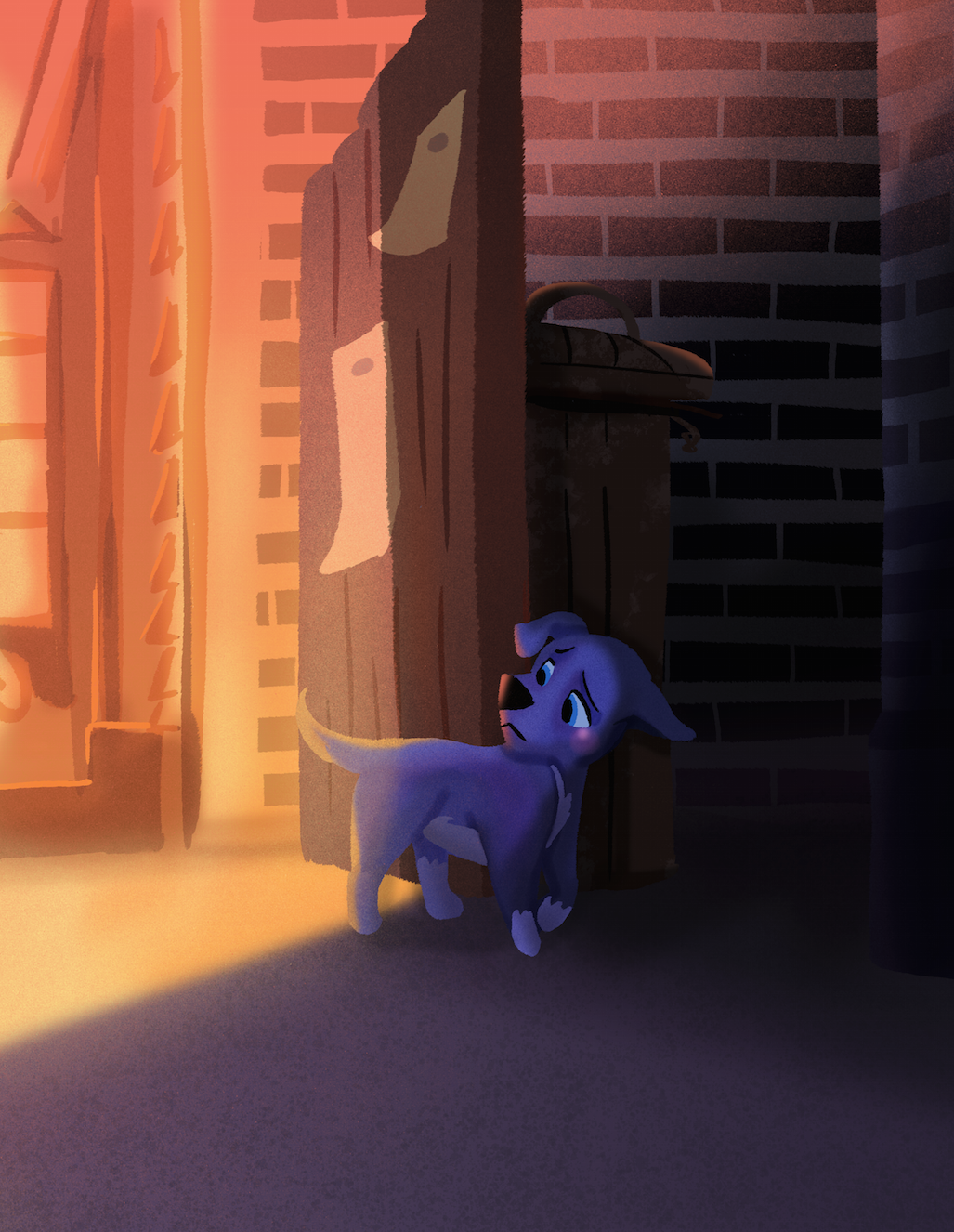
“Creating with computational objects may appear to be a new form of material play in the art classroom: however, DIY subcultures have historically played with electronic and mechanical equipment in inventive ways.”


